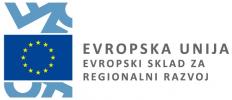Collection and interpretation of data from stalagmites to interpret palaeoclimate and palaeoenvironment
Principal Investigator at ZRC SAZU
Matej Lipar, PhD-
Original Title
Zajem in uporaba podatkov opazovanj jamskih stalagmitov in njihova uporabnost pri interpretaciji okolja in podnebja (Podoktorski raziskovalni projekt »Raziskovalci na začetku kariere 2.0.«)
-
Project ID
OP20.01261
-
Duration
1 June 2017–31 May 2020 -
Lead Partner
Znanstvenoraziskovalni center Slovenske akademije znanosti in umetnosti
-
Financial Source
Ministrstvo za izobraževanje, znanost in šport

Evropski sklad za regionalni razvoj

Partners
Postojnska jama d.d., Research Centre of the Slovenian Academy of Sciences and Arts
The project deals with stalagmite proxies to improve palaeoclimatic curve in Slovenia. The purpose of the project is to examine the importance of long-term environmental changes on the basis of palaeoenvironmental indicators to provide detailed palaeoenvironmental data for accurate climate change assessments; modern urban society must adapt to this in order to achieve a better quality of life. In addition to the Earth's surface, we also focus into the Earth’s interior – caves, especially the stalagmites. Analysing the palaeoclimatic proxies of stalagmites will help updating the palaeoclimatic curve for the Slovenian territory and increase the accuracy in predicting climate change scenarios.
Papers:
- 2021: Earth-Science Reviews – Solution pipes and focused vertical water flow: Geomorphology and modelling
- 2021: Geomorphology - Sinkhole development in the Sivas gypsum karst, Turkey
- 2021: The Cryosphere – Subglacial carbonate deposits as a potential proxy for glacier's existence
- 2020: Acta Carsologica - DNA, spectroscopic and geochemical analyses of bone fragments and associated speleothems in Postojna cave, Slovenia
- 2019: Acta Geographica Slovenica – Chronology of heterogeneous deposits in the side entrance of Postojna Cave, Slovenia
- 2019: International Journal of Speleology – Sulfur ( 34 S/ 32 S) isotope composition of gypsum and implications for deep cave formation on the Nullarbor Plain
- 2019: Geomorphology - Multiphase breakdown sequence of collapse doline morphogenesis: An example from Quaternary aeolianites in Western Australia
Conferences:
- 2021 - AESC (Australian Earth Sciences Convention) – Solution Pipes and Focussed Vertical Water Flow in Carbonates with High Matrix Porosity
- 2021 – MedGU (Mediterranean geosciences Union Annual Meeting) – Syngenetic karst, a global overview
- 2021 – EGU (European Geosciences Union General Assembly) – Impact crater versus bioherm on the Nullarbor Plain, Australia
- 2021 – IKS (International Karstological School) – Imaging solution pipes : case study from Miocene calcarenites in Poland
- 2020 – IRCK (International Training Course on Karst Resources, Environment Effects and Ecological Industries) – Speleothems from Postojna Cave, Slovenia
- 2020 - EGU (European Geosciences Union General Assembly) – Recently exposed subglacial carbonate deposits at the retreating Triglav Glacier, Slovenia (abstract & presentation)
- 2019 - INQUA (International Union for Quaternary Research Congress) – The preliminary results of the Holocene stalagmite palaeoenvironmental record from Postojna Cave, Slovenia (abstract)
- 2019 - MKŠ (Mednarodna krasoslovna šola "Klasični kras") – Water-rock interaction in Postojna Cave: can we use stable oxygen isotopes as palaeothermometer? (abstract)
- 2019 - MKŠ (Mednarodna krasoslovna šola "Klasični kras") – New data about the flowstone age in the side entrance of Postojna Cave, Slovenia (abstract)
- 2019 - ANZGG (Australian & New Zealand Geomorphology Group Conference) – Deep caves on the Nullarbor Plain, Australia (abstract)
- 2018 - MKŠ (Mednarodna krasoslovna šola "Klasični kras") – Advantages in cooperation between public research institutions and privately run natural heritage sights (abstract)
